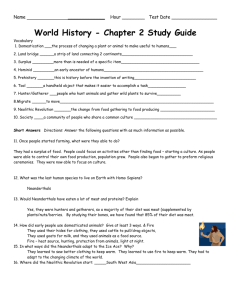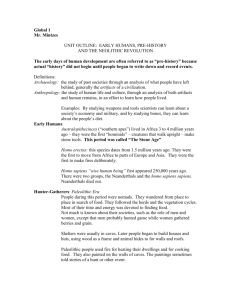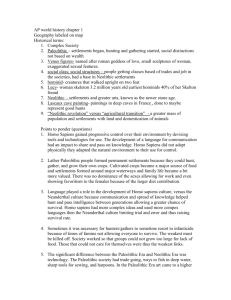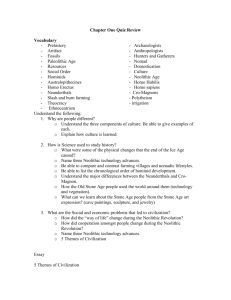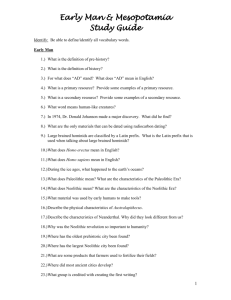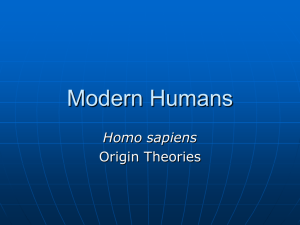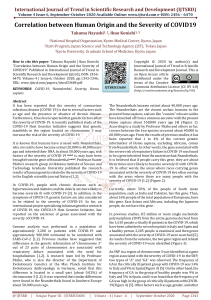Crash Course in World History
advertisement
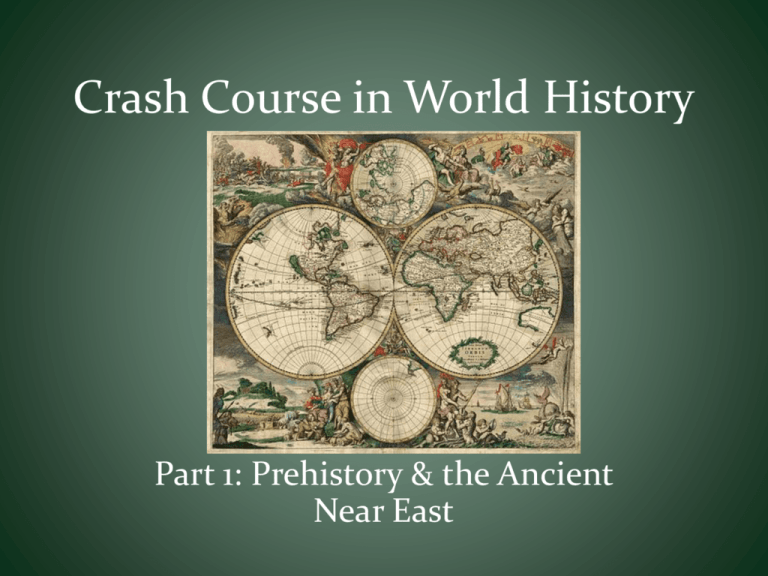
Crash Course in World History Part 1: Prehistory & the Ancient Near East Calendars & Dating • BC/AD – Before Christ/Anno Domini – Based on incarnation of JC – No year 0 • BCE/CE – Before Common Era/Common Era • Gregorian Calendar – – – – Western/Christian Reflects solar patterns Reformed Julian calendar – accurate equinox International civil calendar Paleolithic Era – The Caveman Cometh • ca. 400,000 B.C.E. – 7000 B.C.E. • Nomadic hunters/gatherers • Primitive stone tools • Caves/temp shelters • East African origin? – Migration/adaptation • Homo Sapiens vs. Neanderthals • 40,000 B.C.E. – Homo sapiens arrive in Europe • Neanderthals in Europe 200,000 B.C.E. • Neanderthals extinct around 40,000 B.C.E. • Sculpture and Cave Paintings – ca. 35,000 – 8000 B.C.E. – Not discovered until 20thC in parts of Spain and France – Selective depiction of the animal world Neolithic Era – The Agricultural Revolution • ca. 7000 – 3000 B.C.E. – domestication of wild grains and animals • Agriculture, permanent settlements • The Fertile Crescent – earliest farming sites – Rainfall, availability of wild grains, sheep, and goats • Neolithic settlements in Europe, China, Indus Valley, Peru • Consequences of agriculture: – Larger, healthier populations – Beginning of large scale trade – Division of labor – development of skilled artisans and merchants • Consequences of permanent settlements – Development gov’t, laws, leaders • Large scale irrigation required organization and leadership – People lived in houses – more independence – Development of community – public buildings and religious monuments – Competition and warfare/military and defense systems – Intellectual world -- astronomy, the environment, and religion – ex: Stonehenge Mesopotamia – History Begins at Sumer • 3200 – 1000 B.C.E. • Tigris and Euphrates rivers – modern Iraq • Development of city-states – Uruk, Ur, Babylon, Akkad • Cuneiform – first recorded writing system – First used to keep track of economic activity – Later literature about religion and myths – Gilgamesh • 3200 B.C.E. – Invention of the wheel Egypt – The Gift of the Nile • ca. 3100 – 1200 B.C.E. • Hieroglyphics • Land of pharaohs – kingship VERY important • Complicated polytheistic religion & animal worship • Pyramids, tombs, monuments • Egyptian traditions survived until 400 C.E. Other Near Eastern Civilizations • The Hittites: ca. 1640 – 1100 B.C.E. – Anatolia, Warfare, kings • The Phoenicians: ca. 1200 – 800 B.C.E. – Levant, shipbuilding, trade • The Hebrews: ca. 1500 – 725 B.C.E. – Israel, monotheism • The Assyrians: ca. 800 – 600 B.C.E. – Mesopotamia, militaristic, new technology
